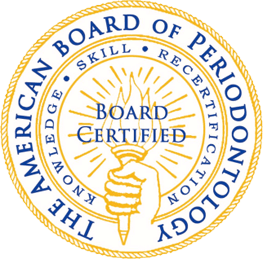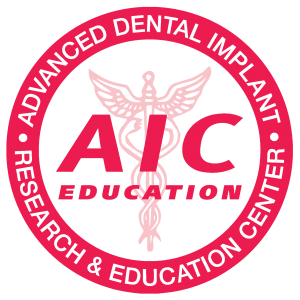 Periodontal disease (also known as gum disease) occurs when plaque bacteria below the gum line irritate the gums and trigger an inflammatory response characterized by reddened tissue, swelling, and bleeding. In severe cases of periodontal disease, bacteria erode gum and supporting bone tissue, causing gum recession, spaces between the teeth and gums, loosening and shifting teeth, and eventually tooth loss.
Periodontal disease (also known as gum disease) occurs when plaque bacteria below the gum line irritate the gums and trigger an inflammatory response characterized by reddened tissue, swelling, and bleeding. In severe cases of periodontal disease, bacteria erode gum and supporting bone tissue, causing gum recession, spaces between the teeth and gums, loosening and shifting teeth, and eventually tooth loss.
Types of Periodontal Disease
Gingivitis
The mildest form of periodontal disease, gingivitis, causes redness, swelling, and bleeding of the gums. It usually can be reversed by daily brushing, flossing, and regular cleanings by a dental professional. If left untreated, gingivitis can advance into periodontitis, which is more severe.
Periodontitis
As plaque accumulates below the gum line, gums can separate from teeth, creating gaps (known as pockets) that may become infected. These pockets can deepen, often resulting in destroyed gum tissue and bone as well as loosening teeth that may have to be removed.
Types of periodontitis include the following:
- Chronic periodontitis, which often progresses slowly, is the most common form and is most prevalent in adults
- Aggressive periodontitis, which is characterized by rapid detachment of gums to teeth and rapid bone loss. This form is likely to appear in smokers and in those with a family history of periodontitis
- Necrotizing periodontal disease, in which necrosis (the death of tissue) affects gums, bone tissue, and the fiber connecting teeth to the bone. This extremely rare form of periodontitis is prevalent in those who suffer from human immunodeficiency virus (HIV), immunosuppression, or malnutrition. In some cases, periodontitis is associated with systemic disease affecting other parts of the body. Conditions like diabetes are associated with this form of periodontal disease.
Prevention
The first step to preventing periodontal disease is by brushing at least twice a day and flossing once a day to remove plaque and debris from between the teeth and below the gum line. The AAP also recommends that all adults receive a comprehensive periodontal evaluation annually.
Risk Factors
- Poor Oral Health Habits: Without twice-daily brushing and regular flossing, there is an increased likelihood of plaque buildup.
- Age: Adults age 65 and over have higher incidences of periodontal disease, according to data from the Centers for Disease Control and Prevention.
- Medications: Certain drugs can reduce the flow of saliva. Without adequate saliva production, the mouth can become a breeding ground for bacteria.
- Tobacco Use: Users of cigarettes and chewing tobacco are at an increased risk of periodontal disease. Tobacco use is said to be one of the most significant risk factors in the development and progression of periodontal disease.
- Genetic Predisposition: Research has found some individuals may be genetically susceptible to periodontal disease.
Treatment
If periodontal disease is suspected, the next best step is to seek the counsel of a periodontist, a dental specialist uniquely trained in the treatment of periodontal disease. Depending on the severity of disease, a periodontist may recommend a number of treatments ranging from deep cleaning, medication, or surgery. There are also a number of procedures to restore aesthetics and function in the event of tooth loss. Treatment may also include a care routine and the avoidance of certain habits like smoking.











